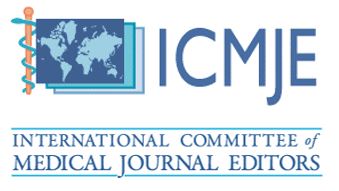Spinal Cord Injury Rehabilitation: Basics and Beyond
Borneo International Spinal Cord Injury Rehabilitation Conference 2021
DOI:
https://doi.org/10.51200/bjms.vi1.3708Keywords:
spinal cord , injury, rehabilitationAbstract
This special issue is dedicated to the Borneo International Spinal Cord Injury (SCI) Rehabilitation Conference (BISCIR) which was held on 30th July – 1st August 2021 through a virtual platform. It was co-organized by the Department of Rehabilitation Medicine, Queen Elizabeth Hospital, and Rehabilitation Medicine Unit, Faculty of Medicine and Health Sciences, Universiti Malaysia Sabah in partnership with Docquity and Kelab Perubatan Rehabilitasi Sabah. Attended by almost 500 delegates from Southeast Asian countries including the hosting country of Malaysia, the conference served its purpose as a global sharing platform by having invited local and international experts from Thailand, the Philippines, India, South Korea, and Australia.
With the theme “SCI Rehabilitation: Basics and Beyond”, there was a great opportunity for participating delegates to submit their abstracts for oral and poster competition on spinal cord-related disorders and their rehabilitation. The covered areas include but are not exhaustive to the spinal cord pathophysiology, disease presentations, complications, and management, as well as rehabilitation interventions. Each submitted abstract was double-blinded peer-reviewed by two external reviewers.
A total of 15 abstracts were accepted after rigorous review based on objective judging criteria, with seven and eight abstracts as oral and poster submissions respectively. Most of them were case reports with four cross-sectional studies and one review article. “Managing Tetraplegia with Blindness: Rehabilitation Approach” presented the improvement in mobility and daily living skills through orientation and mobility training with sensory education and repeated verbal instructions for compensating the loss of visual and sensory feedback. The “International Lower Urinary Tract Function Data Set: A Study in SCI Population in HRC” reviews the epidemiology of spinal cord injury patients with the neurogenic bladder in the largest rehabilitation hospital in Malaysia. “Navigating Neurological Recovery with NeuroAiD in Severe Spinal Cord Injury: A Noteworthy Novelty?” reported a case of complete tetraplegia who regained some neurological recovery following NeuroAiD supplementation.
“A Case of Incomplete Spinal Cord Injury Associated with Brown Sequard Syndrome After Cervical Blunt Trauma with Atlanto-Axial Rotatory Subluxation in a Paediatric Patient” exhibited a case of a paediatric patient with high cervical spinal cord injury secondary to blunt trauma that has resulted in atlantoaxial rotatory subluxation. The “Long Cervicothoracolumbal Rigid Bracing Stabilization on Incomplete Spinal Cord Injury of Post-Operated Multi-Focal Upper Cervical-Thoracic Spinal Tuberculosis: A Unique Case Report” showed that the use of long CTLSO rigid external stabilization justifies the reason to boost protection while recovering from spinal tuberculosis despite receiving stable internal stabilization. “Orthotic Intervention for Ageing Individuals with Spinal Cord Injury: A Brief Review” explored the use of orthotic intervention among the elderly with SCI in 25 published articles. The “Demographic Characteristic of Spinal Cord Injury Patients Referred for Rehabilitation in Miri Hospital” aimed to explore the demographic characteristics among the referrals for rehabilitation among spinal cord injury populations in that tertiary hospital.
The “Autonomic Dysreflexia with Concurrent Orthostatic Hypotension: A Clinical Approach Dilemma” highlighted the complicated conditions of managing concurrent Autonomic dysreflexia and orthostatic hypotension in a patient with high cervical spinal cord injury. “A Pinch of Salt Won’t Kill: The Role of Salt Tablets in Reversing Intractable Orthostatic Hypotension in an Incomplete Tetraplegic Patient” presented a case of intractable orthostatic hypotension in incomplete tetraplegia, which resolved after the initiation of salt tablets. The “Marching Forward with Mirabegron: A Novel Treatment Option for Neurogenic Detrusor Overactivity in Traumatic Spinal Cord Injury” showcased a case of young traumatic paraplegia who has been successfully treated with Mirabegron as an alternative to anticholinergics in treating overactive bladder for its better tolerability and comparable efficacy.
“A Retrospective Pilot Study on the Prevalence of Acceptability for Teleconsultation among Spinal Cord Injury Patients” observed the acceptability of teleconsultation among SCI patients in a major tertiary rehabilitation hospital with a description of their clinical and demographic features. “Performing Solat in Spinal Cord Injury Patients: Challenges and Solutions” emphasized the importance to educate healthcare workers for identifying the limitations and leniency in Islam related to performing prayer (solah) and understand the conditions of the validity of the performed prayer as means to equip patients with the right knowledge and method. The ”Sharing of Experience of Teleconsultation with Spinal Cord Injury Patients” proven that the use of teleconsultation is a beneficial service among SCI patients during the COVID-19 pandemic. “Fleet Enema-Induced Autonomic Dysreflexia in Spinal Cord Injured Patient” reported the use of fleet enema in spinal cord injured patients that can cause autonomic response leading to severe complication of a generalized tonic-clonic seizure. The “An Uncommon Case Post-traumatic Syringobulbia: A Case Report” showed that the formation of syringobulbia, although rare, is one of the causes of the delayed-onset neurological deterioration in spinal cord injured patients.
The accepted abstracts are presented in the following sections of this issue. Readers are welcome to contact us for any comments or queries.
Published
How to Cite
Issue
Section
License
All articles are published under the Creative Commons Attribution-NonCommercial (CC BY-NC 4.0) license, enabling users to read, download, copy, distribute, and adapt the material for non-commercial purposes, provided proper credit is given to the original authors and the source. This model supports transparency, accessibility, and the global exchange of medical knowledge.








1.png)



